smallcase in focus – Realty Tracker
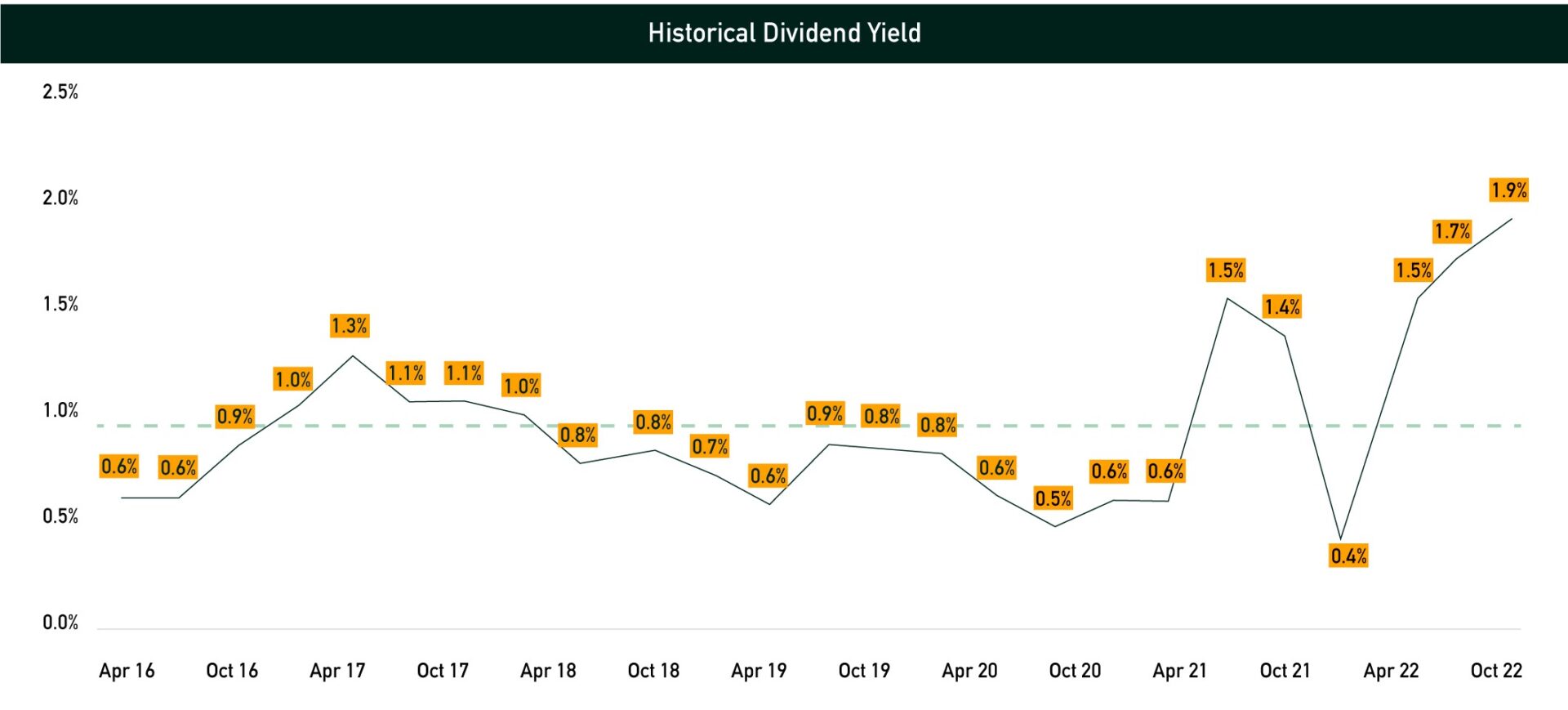
The real estate sector is one of the most important sectors of the Indian economy. It contributes around 6-7% to the country’s GDP and is the second highest employment generator after agriculture. The sector is expected to grow to $1 trillion by 2030.
While increased urbanization and rising household income is pushing up demand for residential properties, increasing transparency and returns have succeeded in attracting large amounts of investments into the sector. Favorable Government policies like 100% FDI for townships and settlements development projects, RERA Act, “Housing for All” scheme etc. have been aiding the growth of the sector.
Windmill Capital launched the Realty Tracker smallcase in April 2016 to aid investors efficiently track and invest in the real estate sector. Since its launch the smallcase has generated compounded returns of ~23% vs 16% generated by comparable equity mid cap stocks. Historically the smallcase has been dominated by stocks of companies that are active in the residential real estate sector. In Jan 2022 for the first time, we added stocks of 2 REITs in the smallcase. Both these REITs have significant exposure to office space providing diversification benefits.
Real Estate Investment Trust’s (REITs) are a new addition to the Indian equity space. We are all familiar with the concept of mutual funds. Mutual Fund’s pool money from investors and use the money collected to buy equity or debt instruments. REITs also work in the same manner, except the money collected is invested in a portfolio of income-generating real estate assets. So essentially, investors in REITs’ invest in properties via a fund manager. These properties earn returns in the form of rental income and capital appreciation. These returns are then distributed to the investors in the form of dividends. In addition, if the REIT is listed, investors will also benefit due to capital appreciation of stock price.
In line with the increasing number of REITs getting listed, both regulators and exchanges have also started introducing a number of reforms. SEBI has reduced both the minimum investment criteria for REIT IPOs as well as minimum lot size for trading. National Stock Exchange (NSE) has also revised the eligibility criteria to accommodate REITs in its indices. Many funds track indices and only invest in stocks that are part of major indices. Hence inclusion into an index will result in heightened buying activity.
Below are some of the benefits of investing in REITs vs buying property.
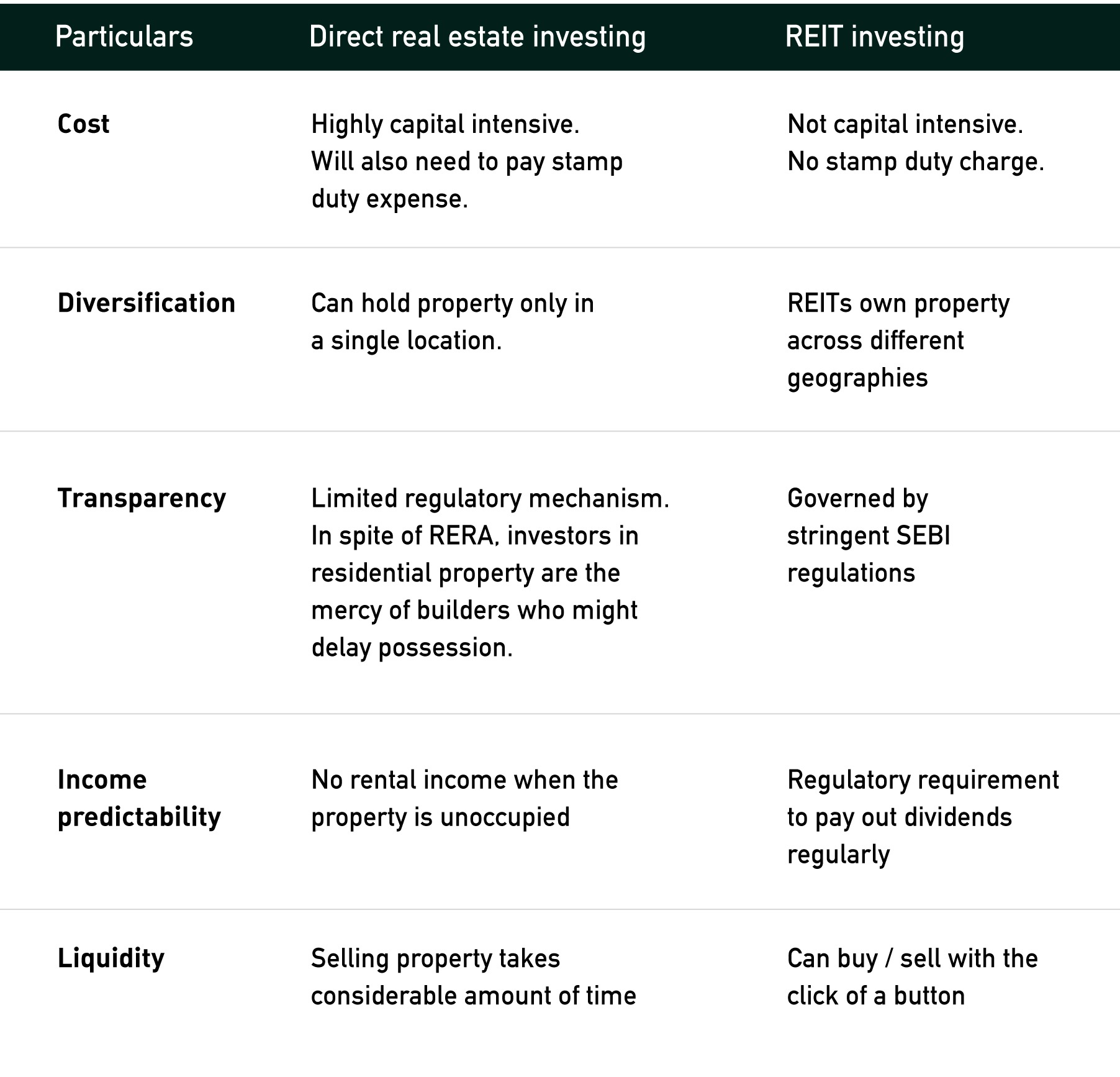
Now let us take a look at how the Realty Tracker smallcase has benefited due to inclusion of Embassy Office Parks REIT and Mindspace Business Parks REIT.
Dividend Angle
Dividend yield, displayed as percentage, indicates the amount of dividend a company pays out relative to its stock price. Provided the stock price is relatively stable or rising, higher the dividend yield the better.
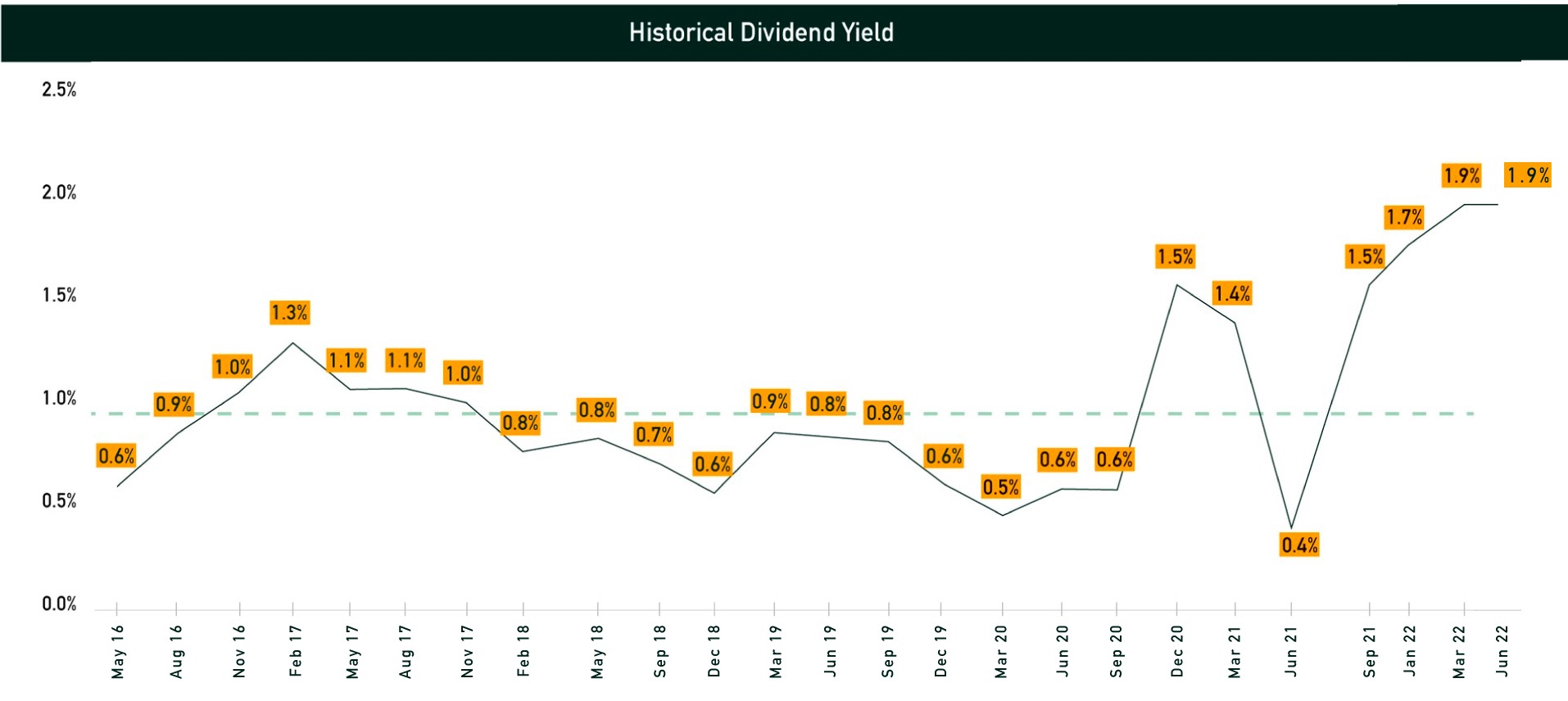
The chart shows the dividend yield of Realty Tracker smallcase since its launch. As can be seen, the average dividend yield of the tracker is 0.9%. But after including REITs in the smallcase the dividend yield of the smallcase has significantly jumped up. This is because REITs are mandatorily required to pay out 90% of their distributable cash flows at regular intervals. Further, at least 80% of the investments must be made in properties that are capable of generating revenues. This ensures that the entities have sufficient opportunity of generating rental income or capital income.
Volatility Angle
Volatility is used to indicate the risk associated with the stock. It is most commonly associated with big swings of prices of stocks. Higher the volatility, the higher the perceived risk. A stock with higher volatility will see its price fluctuate rapidly within a specific period, whereas a low volatility stock will not see as much price fluctuation.
These aspects of volatility can be applied at a portfolio level also. 3 aspects of an individual stock affects the portfolio volatility.
- Weight of the stock within the portfolio
- Standard deviation of the stock
- Covariance or relational movements of that stock with other stocks in the portfolio
Once an analyst decides to pick a stock, she can only jig the weights to influence the portfolio volatility. The other 2 aspects are decided by the market and are not within the analysts’ control.
Lets deep dive into volatility aspects of Realty Tracker to understand how addition of REITs has benefitted the smallcase. REITs were added to the smallcase during January 22 rebalance and no changes have been made to the smallcase since then. When it comes to Jan 22 rebalance there are 2 aspects that we will explore.
- What happened to smallcase volatility after inclusion of REITs?
- What would have been the smallcase volatility if REITs had not been included and their weights were redistributed amongst other stocks?
The table below has weights for both these scenarios.
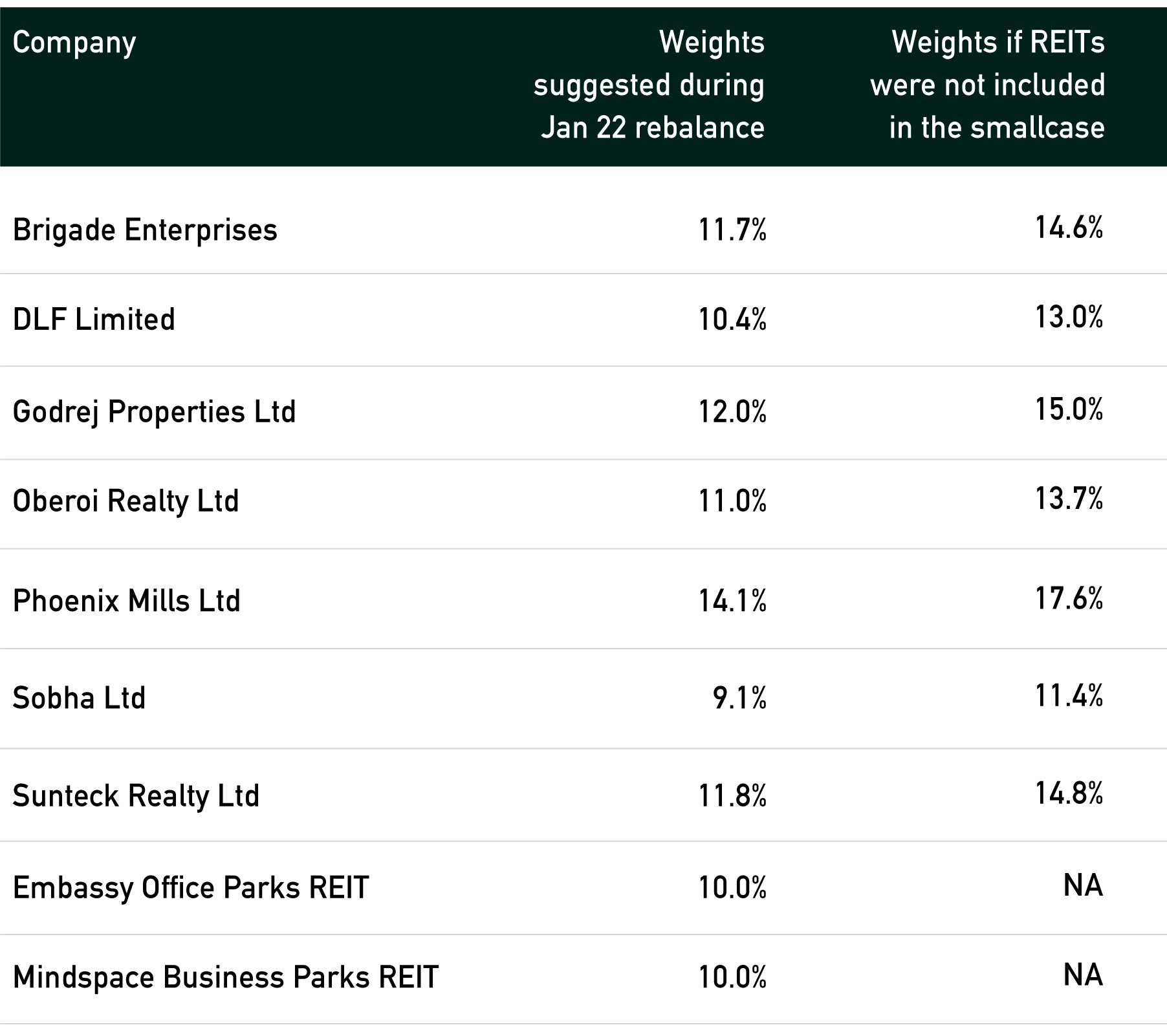
The actual smallcase with REITs has an annualized volatility of 25% for the Jan 22 – July 22 period. For the same period, the hypothetical portfolio which does not include REITs has an annualized volatility of 31%. This clearly indicates that by including REITs in the smallcase, its volatility reduced. The chart below shows the constituents’ % contribution to the overall smallcase risk. For example, Sunteck Realty has contributed 14.8% to the total smallcase’s volatility. On the other hand the 2 REITs cumulatively have contributed 2.1%.
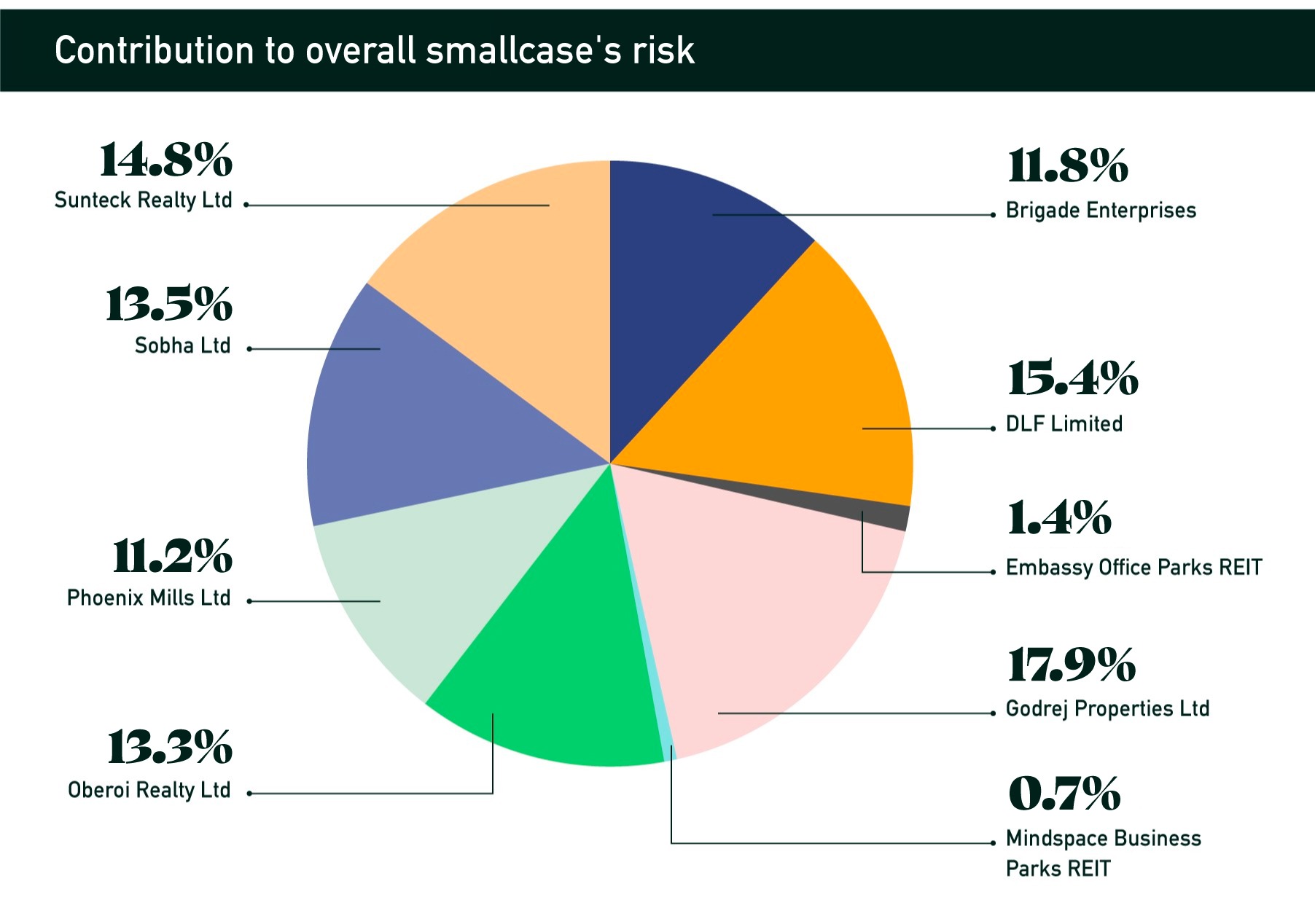
The returns of the smallcase with REITs for the period under question was -4.6% whereas the hypothetical portfolio without REITs would have generated a return of -6.2%. Here is a quick summary of portfolio volatility and returns in both cases.
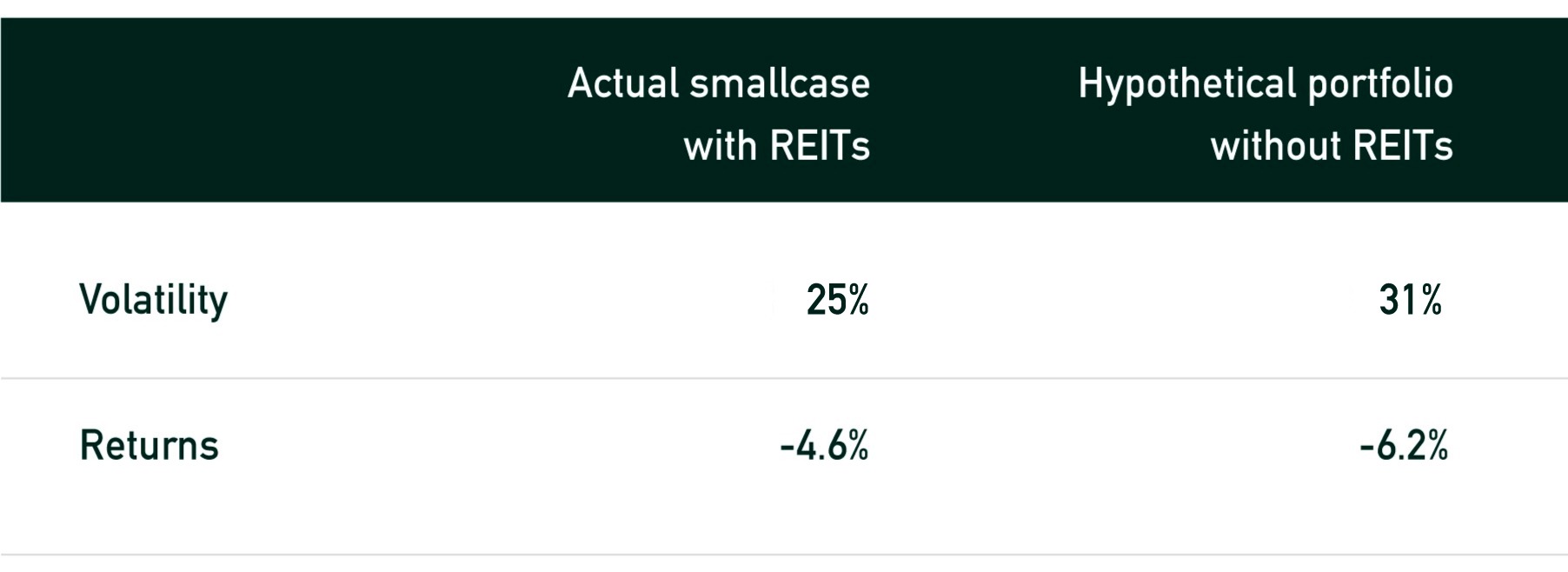
Thus by picking the right stocks and ensuring optimal weightage, not only have we managed to reduce the overall risk profile of the Realty Tracker smallcase but also protect the downside of the smallcase.
Read more about Real Estate Investment Trusts and a comparison of the listed REITs here.
Follow us on Twitter @windmillcapHQ for updates on our latest and existing offerings and interesting market insights. Also, feel free to let us know what else you wish to read!
Disclaimer: The content in these posts/articles is for informational and educational purposes only and should not be construed as professional financial advice and nor to be construed as an offer to buy/sell or the solicitation of an offer to buy/sell any security or financial products. Users must make their own investment decisions based on their specific investment objective and financial position and use such independent advisors as they believe necessary. Refer to our disclosures page, here.





